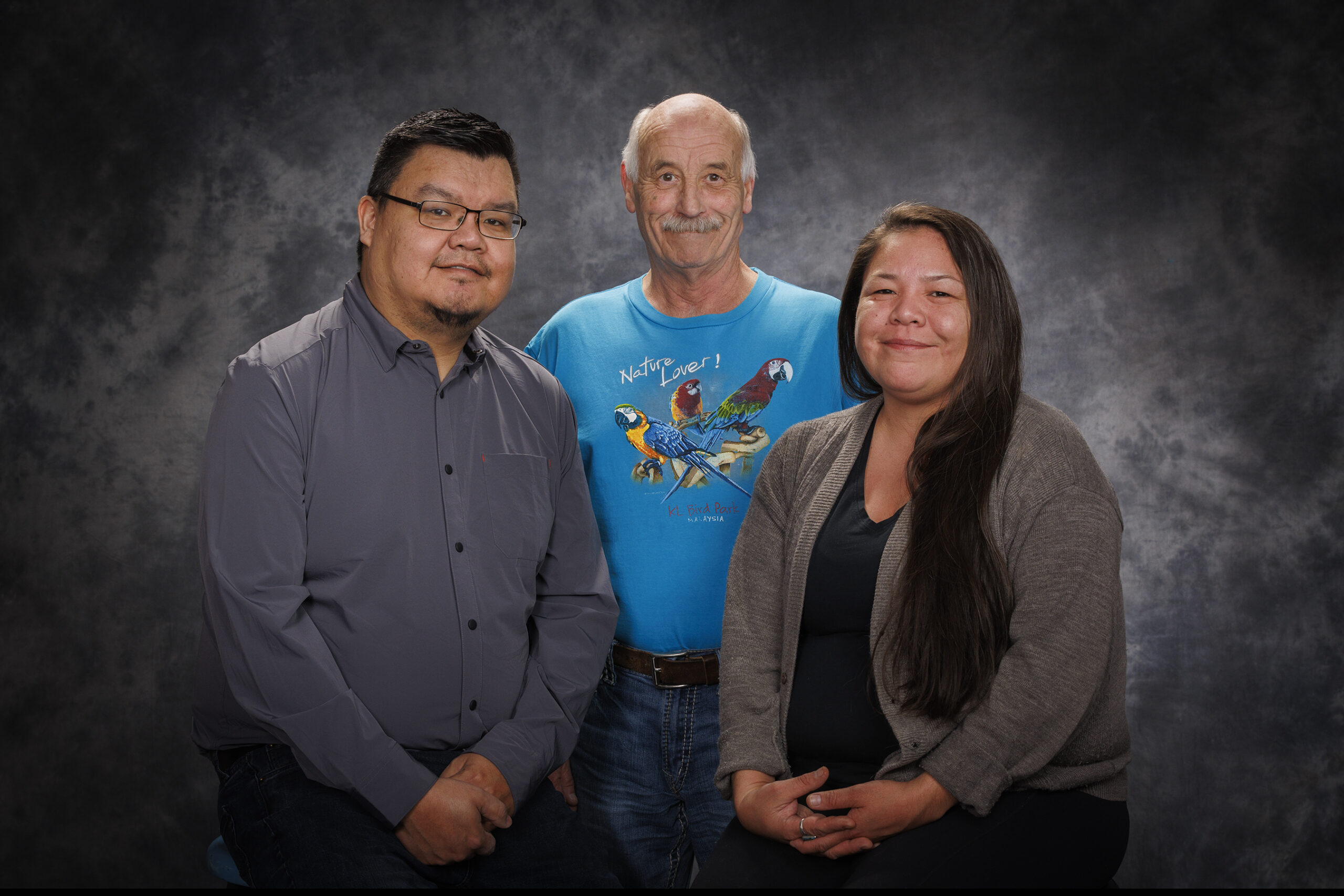Protecting & Sustaining Our Lands
Natural Resources
The Natural Resource Department is dedicated to the protection and sustainable management of the natural resources in the territory. The Natural Resource Department works with traditional land users and knowledge holders in the stewardship of the land and waters in order for our Nation's member to continue to meaningfully exercise their Indigenous Rights, Title, and Interests.

REFERRALS
The Natural Resources (NR) Department is responsible for referrals; All resource activity proposed to take place on within the Tl’azt’en Nation territories is consulted with the Nation through the Natural Resource Department. We work closely with both proponents and government ministries and departments to review referrals on stewardship objectives of the Nation:
- Tl’azt’en Nation Land Use Plan (2016)
- Stewardship Collaboration (MFLNRORD)
- Keyoh stewardship planning
- FREP Field Work.
FOREST AND RANGE EVALUATION PROGRAM (FREP)
NR Field staff accompany MFLNRORD staff to conduct Forest and Range Evaluation Program (FREP) Assessments. FREP is an assessment tool to evaluate performance of licensees in the area of stewardship and forest practices.
KEYOH MAPPING
NR is also responsible for Keyoh Mapping. NR staff work closely with land users and traditional knowledge holders to map their traditional territory: Traditional Use Sites (TUS), Dakelh Placenames, trail networks, places of cultural significance.
CULTURAL RESEARCH & ARCHIVES
NR Department houses the cultural research archives which includes Elders’ interviews, government archival documents, and genealogy database.
Our Success Story
Tl’o ba Grizzly Bear Wildlife Habitat Area (WHA)
Tl’o ba, which means “meadow above (a riverbank)” is a large and unique grassland habitat along K’uzkoh (Kuzkwa River).
The Tl’o ba Grizzly Bear WHA was designated in December 2020. Tl’azt’en Nation partnered with Ecosystem Branch of MFLNRORD to protect the K’uzkoh riparian system, the grasslands, and adjacent grizzly bear denning habitat. Objectives of the wildlife strategies of the WHA include: – protect known areas of concentrated seasonal use by Grizzly Bears – maintain ecological integrity of important seasonal habitats – ensure the security of the bears using these habitats Dakelh Placename Map. Over 400 Dakelh placenames identified throughout the Tl’azt’en territory. Mapping products currently being developed. Neyun Huwuts’inli – We Take Care of the Land. Tl’azt’en Nation Land Use Plan (2015). Draft land use plan identifying stewardship objectives for the Nation. It is in the active defence of Tl’azt’en Nation’s Indigenous Rights, Title and Interests that specific management priorities are identified to ensure the primary management objective of Food Security. The ecosystems that support key wildlife and plant communities must be managed in a manner to maintain subsistence activities for the benefit of Tl’azt’en families. It is the Crown’s fiduciary obligation to protect these Aboriginal Rights:
- Subsistence Food Fisheries Watersheds
- Fisheries Sensitive Watersheds (FSW)
- ‘Udeno Tsendzut spatial candidate for Biodiversity Area
- Tl’o ba Grizzly Bear Wildlife Habitat Area (WHA)
- Grizzly Bear Riparian Corridors
- Wildlife Connectivity Terrestrial Ecosystem Corridors
- Pine Salvage Retention and Mitigation Strategies
FISHERIES
The goal of the Fisheries Department is to monitor the early Stuart and late Stuart sockeye runs to ensure that they will be managed and assessed on a regular basis. Maintaining these runs is of utmost importance to our people and we manage them sustainably to ensure the future generations will have the same opportunity as we do today. Salmon, and fish in general, are a mainstay of our traditional diet. It is what our people have relied on for generations. We rely on numerous species of fish get our sustenance throughout the winter and ensuring Tl’azt’en Nation is fully involved in the management of these stocks is the main goal of the Fisheries Department staff.
The Fisheries Department staff offers advice on fisheries related issues with industry (e.g., forestry, pipelines, mining, environmental assessment); Provide updates to the community on status of sockeye stocks and management decisions concerning those stocks; Monitor community catch during fishing season; Represent Tl’azt’en Nation at regional fisheries meetings; Assist with sturgeon by-catch.
Fisheries programs include:
- Early Stuart Sockeye Enumeration Program
- Late Stuart Adult Enumeration/Mark Re-capture program
- Catch monitoring program
- Sturgeon Monitors
- UFFCA/Fish Habitat Restoration Initiative
ENVIRONMENTAL STEWARDSHIP
Tl’azt’en Nation celebrates and practices our role as stewards of our territories.
We strive to uphold our cultural systems that includes Elders, Keyoh Holders, and Hereditary systems.
We build healthy communities through promoting Dakelh heritage and identity, oversee the operations, procedures, laws, powers, and jurisdictions related to Tl’azt’en Nation. We seek to maintain and protect Tl’azt’en Nation Rights and Title.
JOHN PRINCE RESEARCH FOREST
The John Prince Research Forest (JPRF) is a natural resource research and education facility, jointly owned and operated by Tl’azt’en Nation and the University of Northern BC (UNBC), on approximately 17,000 ha of forest lands within Tl’azt’en traditional territory.